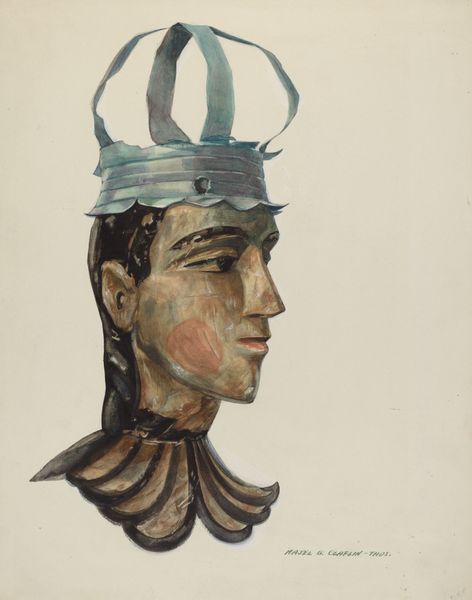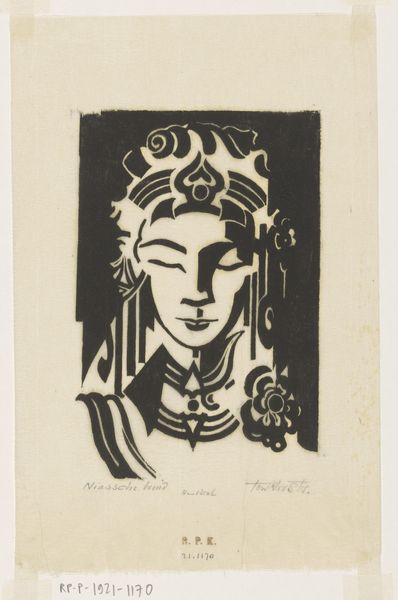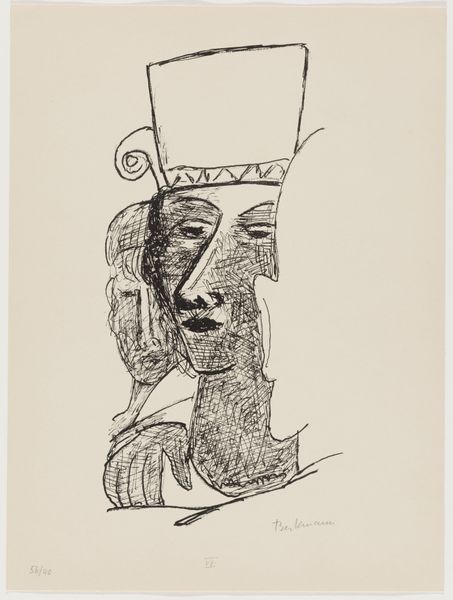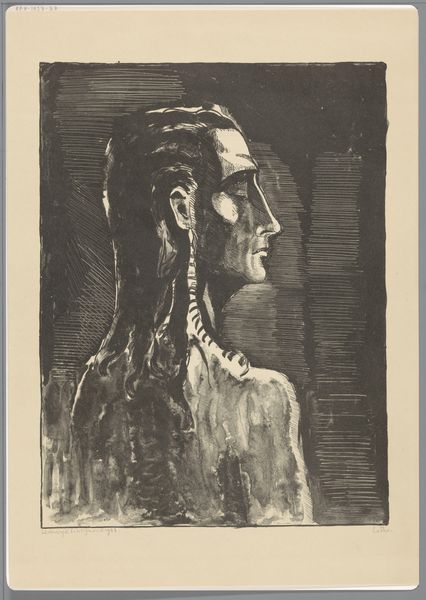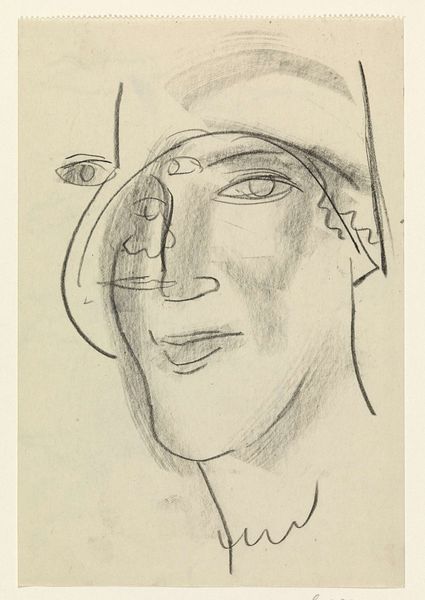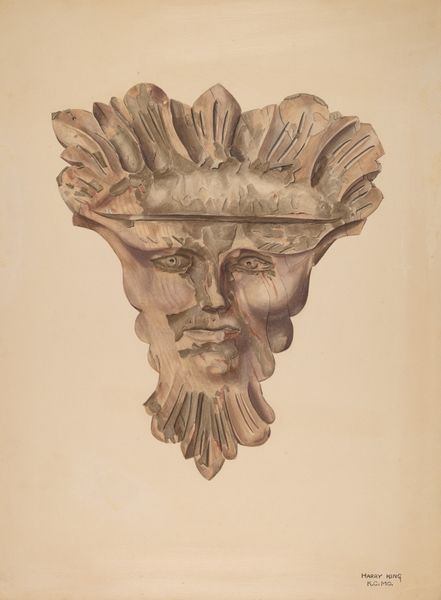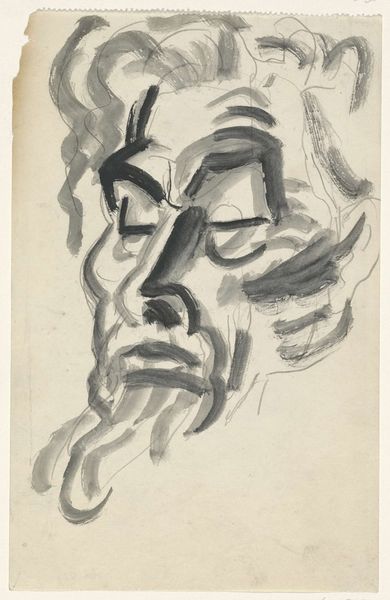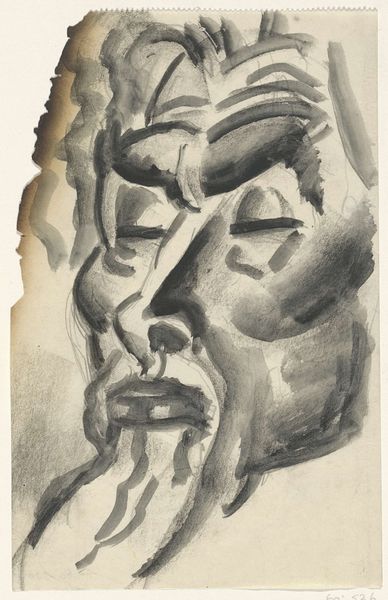
drawing, watercolor
#
portrait
#
drawing
#
greek-and-roman-art
#
watercolor
#
ancient-mediterranean
#
history-painting
#
portrait art
#
watercolor
Dimensions: 50.5 cm (height) x 45.5 cm (width) (bladmaal)
Curator: Here we have Marie Henriques’ “Hermes hoved fra Veji,” a watercolor and drawing created in 1926. Editor: My first impression is one of classical calm, even through the somewhat fragmented representation. There's a tangible presence despite the clear signs of age and artistic interpretation. Curator: Precisely. Henriques’ work beautifully encapsulates the allure of antiquity through a considered layering of visual elements. Notice the way she balances the solidity of form with the transparency of the watercolor washes. The restrained palette, dominated by muted blues and browns, lends a distinct tonal unity. Editor: And doesn't that restrained palette also evoke a sense of historical distance? Hermes, as a figure, represents much: communication, boundaries, and even thievery, and his iconography here – the petasos or winged helmet – is unmistakable even in its partial depiction. Henriques seems to be drawing on centuries of collective memory. Curator: Indeed. But look at how the light models the face; it isn't merely representational. The contrasts of highlight and shadow define the sculpture's presence in three-dimensional space, while also subtly abstracting the form. The fragmented base hints at something beyond simple representation; it signifies both history and ruin. Editor: It certainly moves beyond a simple copy, doesn't it? We are confronted not just with Hermes, but with an artist's conscious engagement with a powerful set of pre-existing myths and beliefs. That slightly melancholy expression—is that something inherent in the original sculpture, or a quality that Henriques has subtly brought out? Curator: It’s a delicate dance between observation and artistic intervention, leaving us to question the relationship between past and present. The surface quality itself speaks volumes – that subtle grain of the paper interacting with the washes. It is this intricate interplay which activates the artwork. Editor: So, beyond its aesthetic value, the piece offers a fascinating dialogue about cultural continuity, loss, and how we choose to remember and reimagine the past. Curator: Absolutely. A successful combination of form, materials and artistic sensitivity makes for more than just a portrait of an Ancient Greek statue; it creates a meditation on time and form itself.
Comments
No comments
Be the first to comment and join the conversation on the ultimate creative platform.
